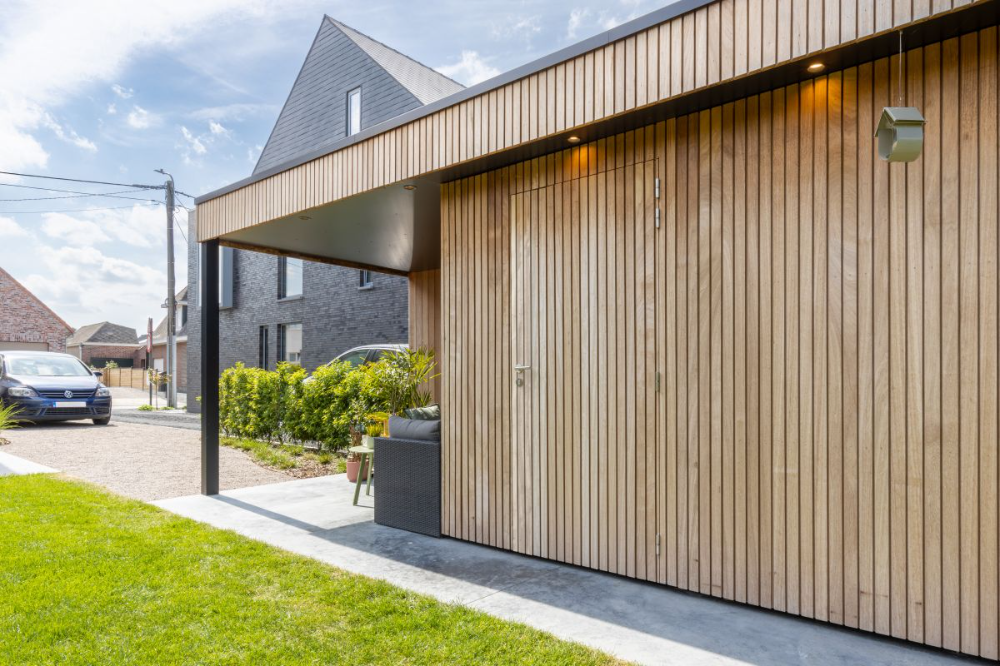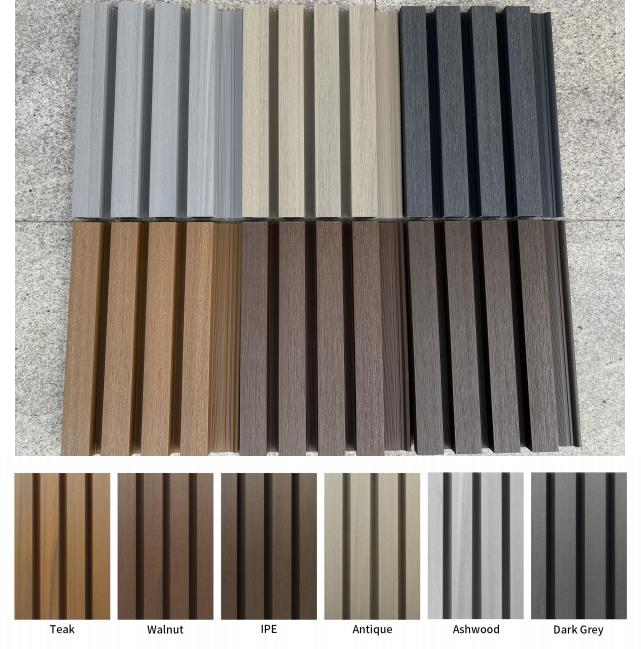In architectural design and construction, exterior walls are more than just a visual element—they play a key role in energy efficiency, durability, and safety. With advancements in material technology, the variety of wall cladding options has expanded, ranging from traditional fiber cement boards to high-performance ASA panels. Each material has its own strengths and weaknesses. So, which one delivers the best balance of cost and performance for your project?

In this article, we will explore the most common cladding materials, their features, and highlight innovative, eco-friendly options like WPC and ASA boards to help you make an informed decision.
1. Traditional Materials: Reliable but with Limitations
Fiber Cement Cladding
A long-established material made primarily of cement reinforced with fibers. It offers good fire resistance, corrosion resistance, and insulation, making it a popular choice for mid-range projects. However, its poor crack resistance makes it susceptible to damage in regions with extreme temperature and humidity fluctuations, increasing long-term maintenance costs.
Metal Cladding
Composite Metal Panels: Known for their aesthetic appeal, insulation, and fire resistance—ideal for high-end commercial buildings. However, they come with a high price tag, requiring a larger budget.
PVC Wall Cladding
Easy to install, durable, and low maintenance. It offers flame resistance, moisture resistance, and corrosion resistance, making it suitable across various climates. However, its poor UV resistance can cause discoloration or degradation in sun-exposed regions.
Solid Wood Siding
Known for its natural texture and aesthetic appeal, it adds warmth and charm to buildings. But it has poor fire resistance, high maintenance needs, and high cost. It also requires special treatment in humid or pest-prone areas.
Stone Cladding
Represents durability and luxury, with excellent visual effects. Stones like marble and granite have strong compressive strength but are heavy, expensive, and may emit radiation, making them better suited for large, well-funded projects.
Exterior Paint Finishes
Water-Based Paints: Environmentally friendly and safe, widely used in residential and commercial buildings. However, poor weather resistance and weak adhesion require a well-prepared surface.
Ceramic Exterior Tiles
Durable, corrosion-resistant, and colorful, ideal for walls needing high strength and longevity. However, production is energy-intensive, non-biodegradable, and less eco-friendly, not suitable for large-scale sustainable projects.
Integrated Insulated Decorative Panels
Combining insulation, waterproofing, and decoration into one panel. These are increasingly popular but have strict installation requirements. Improper installation may lead to detachment and pose safety risks.
Imitation Stone Coatings
A more affordable alternative to real stone, offering a similar visual effect. Good for creating a high-end appearance on a budget. However, texture is still slightly inferior and some products lack long-term durability.

WPC (Wood Plastic Composite) Cladding: A Perfect Blend of Sustainability and Performance
WPC is an innovative material made from wood fibers and plastics (such as PE/PP/PVC).
Key Advantages:
♻️ Highly Sustainable: Uses recycled materials like plastic and wood powder.
☀️ Excellent Weather Resistance: UV-resistant, moisture-resistant, warp-free, and rot-free.
🐛 Insect & Moisture Resistant: Solves the traditional wood issues like insect infestation and mold.
🧰 Easy to Install and Process: Lightweight, extrudable into various shapes, saving on labor costs.
🌳 Natural Aesthetics: Maintains a wood-like appearance, suitable for both modern and nature-inspired architecture.
WPC cladding is truly a high-value material that combines environmental friendliness, durability, and visual appeal.


ASA Cladding: A Rising Star in High-Performance Exterior Materials
ASA (Acrylonitrile Styrene Acrylate) is a type of engineering plastic designed for harsh outdoor environments.
☀️ Superior UV Resistance: Maintains color and appearance even under prolonged sun and heat.
🔨 High Mechanical Strength: Impact and scratch-resistant, protects buildings in extreme conditions.
🎨 Decorative Versatility: Smooth surface with a wide color range, fits various design styles.
🔥 Strong Fire Resistance: Meets multiple international fire safety standards for building materials.
⚙️ Flexible Processing: Suitable for thermoforming, extrusion, and injection molding—easy and reliable during installation.
ASA is becoming the go-to choice for high-end and environmentally focused projects, especially in hot, rainy regions or where color stability is crucial.
Don’t Judge a Cladding Material by Its Cover
Each wall cladding material has its own balance of aesthetics, functionality, sustainability, and cost. For basic residential or commercial projects, fiber cement or PVC may offer the best value. However, for high-end or eco-conscious projects, WPC and ASA provide distinct advantages.
The future of exterior wall materials is clearly moving toward eco-friendliness, high performance, and low maintenance, and WPC & ASA are leading that charge.
praysunmaterials@gmail.com